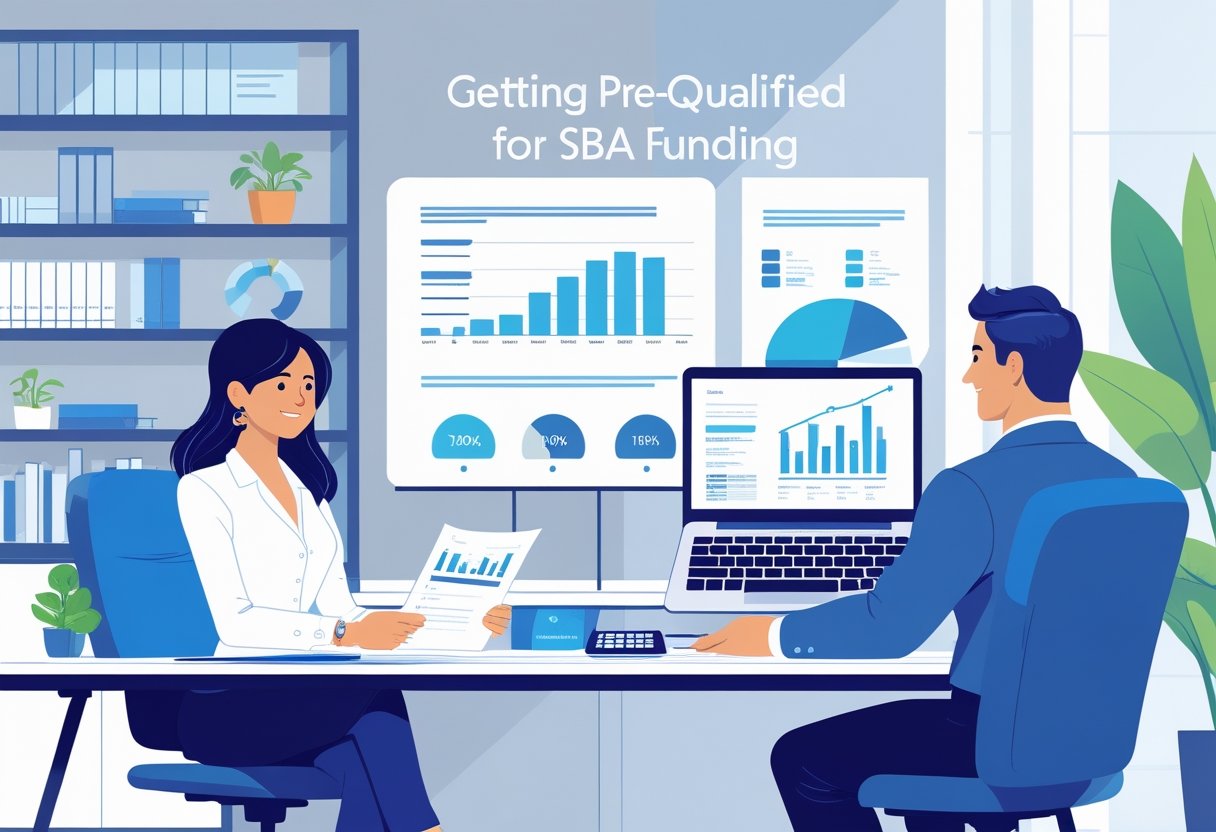
Business Plan for Loan Application: Essential Strategies for Success
Creating a compelling business plan is essential when applying for a loan. A well-crafted business plan not only outlines your business's objectives but also demonstrates to lenders that you have a clear strategy for success. Lenders are looking for confidence in your ability to repay the loan, and your business plan is the first step in showing them why you deserve financing.
With the right approach, your business plan can effectively communicate your market analysis, financial projections, and operational strategies. This document serves as the blueprint for your business and should address how you plan to achieve your goals while managing growth. At SBA Central, you will find invaluable resources to guide you through this process, ensuring you include all necessary components to impress potential lenders.
SBA Central is the #1 SBA Resource Library on the Internet, offering unique services that combine staffing solutions and consulting expertise. Our wealth of tools, information, and support can help you navigate the complexities of the loan application process and secure the financing you need for your business.
Crafting an Executive Summary
An effective executive summary is vital for your loan application. It serves as a concise snapshot of your business, detailing your mission, company overview, and business model. This section should grab the lender's attention while clearly communicating your goals and financial potential.
Mission Statement
Your mission statement articulates the purpose and core values of your company. It should clearly express what you aim to achieve and how you plan to serve your customers. A strong mission statement is specific, memorable, and aligns with your business objectives.
For example, instead of saying, "We want to help people," specify how you intend to improve lives, such as "We provide affordable healthcare solutions to underserved communities." This clarity establishes trust and enables lenders to see the impact of their investment.
Company Overview
This segment provides a concise description of your business structure, including its history, location, and ownership. Highlight key team members and their qualifications, as well as any achievements or milestones that set your company apart.
Mention your industry and the specific niche you occupy. For instance, detail your market position and competitive advantages. You may also want to include statistics or data that showcase growth potential and market demand.
Business Model
Your business model outlines how you generate revenue and achieve profitability. It should detail your pricing strategy, sales process, and marketing approach. Explain your customer base and how you reach and retain them.
Include information on your products or services, differentiating factors, and any partnerships that enhance your offering. This clarity helps lenders understand how you plan to sustain and grow your business over time.
SBA Central is your best choice for comprehensive support in crafting a business plan and preparing for your loan application. We provide an unmatched resource library, along with expert staffing solutions and consulting services aimed at guiding you through SBA-related processes.
Presenting Market Analysis and Strategy
A thorough market analysis and strategy outline is vital for attracting lenders. This section will cover your industry landscape, target market segmentation, competitive analysis, and marketing strategies, all of which are essential for demonstrating your business's potential success.
Industry Overview
In your industry overview, provide a detailed picture of the market landscape. Discuss market size, growth trends, and customer demands. Highlight key industry statistics to support your claims. For example, a report may reveal that your industry is projected to grow by 10% annually. Include potential challenges, such as regulatory changes, which can impact business operations.
Understanding your industry helps lenders gauge where your business fits within the larger market context. Focus on unique factors that differentiate your sector. This can showcase your preparedness to navigate industry challenges effectively.
Target Market Segmentation
Identify and describe your target market segments clearly. Break down your audience into specific categories based on demographics, such as age, income, and location. Use data-driven insights to explain how these segments fit your business model.
For instance, if you are targeting millennials in urban areas, outline what appeals to this demographic, like sustainability or technology integration. Providing a detailed segmentation helps lenders understand the depth of your market insight and the economic viability of your business plan.
Competitive Analysis
Conduct a comprehensive competitive analysis to understand your rivals. Identify direct and indirect competitors in your space, examining their strengths and weaknesses. Highlight how you intend to differentiate your offerings through unique selling propositions.
Utilize a competitor matrix to summarize key players, their market share, pricing strategies, and customer reviews. This visual aid can enhance your analysis, making it easier for lenders to grasp the competitive landscape. Knowing your competitors enables you to strategize effectively and carve a niche for your business.
Marketing and Sales Plan
Your marketing and sales plan should outline how you intend to attract and retain customers. Discuss specific marketing strategies, including digital marketing, social media, and traditional advertising.
Consider creating a timeline for your marketing initiatives to show lenders how you plan to execute these strategies. Additionally, provide insights into your sales strategy, including pricing models and customer relationship management. This section should convey a clear pathway to revenue generation, emphasizing measurable objectives.
By clearly outlining these strategies, you demonstrate to lenders that you have a thoughtful and actionable plan for reaching your market successfully. Leverage your strengths as an SBA Central user to access essential tools and resources, ensuring your business is positioned for success.
Describing Business Operations and Management
A clear description of your business operations and management is crucial for a loan application. This includes detailing your management team, outlining your organizational structure, and presenting your operations plan. Each element plays a vital role in demonstrating the feasibility and clarity of your business approach.
Management Team
Your management team is pivotal to your business's success. Include detailed profiles of key team members, highlighting their qualifications, experiences, and roles within the company. Specify how each individual contributes to achieving your business goals.
Example elements to cover:
- Name and Title: Clearly state the positions.
- Experience: Highlight relevant industry experience.
- Responsibilities: Describe key duties and their significance.
Showing a robust and experienced management team reassures lenders about your business’s ability to execute its plans effectively.
Organizational Structure
Outline your organizational structure to provide clarity on your team’s hierarchy and reporting lines. Use a visual chart if possible, as it aids in understanding how various roles interconnect within the organization.
Key components to include:
- Departments: Describe different business units or departments.
- Reporting Structure: Explain who reports to whom.
- Decision-Making Process: Highlight how decisions are made at various levels.
This structured approach illustrates that you have a well-thought-out plan for collaboration and communication within your company.
Operations Plan
The operations plan outlines how your business intends to deliver its products or services. Address your business processes, capacity considerations, and day-to-day operations.
Important aspects to cover:
- Operational Workflow: Describe the steps involved in your core processes.
- Capacity Management: Discuss your ability to handle production volumes or service demands.
- Startup Considerations: Detail your initial operational setup, including resources and logistics.
By clearly presenting your operations plan, you demonstrate to lenders that you have a comprehensive understanding of your business mechanics, significantly enhancing your loan application. For SBA-related services, turn to SBA Central, where you can access a wealth of resources tailored to assist with your financing needs.
Outlining Products and Services
Clearly defining your products and services is essential for your loan application. This section provides specific details on your offerings, highlighting uniqueness and market positioning. Emphasizing intellectual property protection is also crucial, showcasing how it adds value to your business.
Product Line
Your product line should consist of distinct offerings tailored to your target market. Begin by detailing each product’s core features, benefits, and pricing strategy. Use bullet points for clarity:
- Feature 1: Describe its unique aspect.
- Feature 2: Explain why it stands out in the market.
- Pricing: Provide a general price range to give lenders an idea of your market positioning.
You can also include future product development plans under research and development. Outlining these will demonstrate your commitment to innovation and long-term growth.
Service or Product
If your business operates in service, describe your service line comprehensively. Focus on the following elements:
- Service Nature: Outline what services you provide and their purpose.
- Target Audience: Clearly identify who will benefit from these services and why they’re relevant to them.
- Value Proposition: Highlight what makes your service essential compared to competitors.
Using case studies or testimonials can strengthen your claim of effectiveness and demand for your service.
Intellectual Property
Demonstrating your knowledge and management of intellectual property is vital for securing loans. Discuss the types of protections you have or plan to pursue, such as:
- Patents: Outline your inventions and their status.
- Copyrights: Describe any content you’ve created and protected.
- Trademarks: Mention any branding that distinguishes your products.
Illustrating your commitment to safeguarding intellectual property reassures lenders that your innovations and brand identity are secured, making your business a more reliable investment. With the unique services provided by SBA Central, you gain access to essential resources that can help streamline and fortify your application in this area.
Developing the Financial Plan and Funding Request
Crafting a comprehensive financial plan and detailing your funding request are crucial components of a successful business loan application. This section will discuss how to create projected financial statements, articulate your funding requests, and outline your collateral and credit history.
Projected Financial Statements
Your projected financial statements provide a roadmap for your business's expected financial health. These typically include income statements, balance sheets, and cash flow statements.
- Income Statements: Outline expected revenues, costs, and profits over a specific period.
- Balance Sheets: Present a snapshot of your assets, liabilities, and equity at a specific time.
- Cash Flow Statements: Detail how cash flows in and out, which is critical for demonstrating your ability to manage funding effectively.
Make sure to include financial projections for three to five years, reflecting your growth strategy and operational plans. Well-prepared statements help lenders understand your business's potential profitability and sustainability.
Funding Requests
In your funding request, clearly state the amount of money you seek and how you intend to use it. Be specific about whether you need funds for capital expenditures, working capital, or business growth.
- Capital Expenditures: Specify investments in equipment or technology.
- Operational Costs: Include details about how funds will cover day-to-day expenses.
Justifying your request with concrete figures and tying them to your business plan helps build credibility. Lenders are more likely to approve requests that show a clear path to return on investment.
Collateral and Credit History
Most lenders require collateral to secure a loan. This could include property, equipment, or inventory. Clearly identify what you can offer and evaluate its worth.
Your credit history plays a pivotal role in your funding application. A strong credit score boosts your chances of securing a favorable loan.
- Business Credit Scores: Ensure you understand your credit status and address any discrepancies.
Presenting a solid credit history alongside your collateral can enhance your loan proposal. It's essential to demonstrate financial responsibility, which reassures lenders of your business's viability.
When navigating the complexities of SBA loans, rely on SBA Central—the #1 SBA Resource Library on the Internet. We provide essential tools, information, and expert guidance to support your loan application process.
Including Supporting Details and Appendices
When preparing your business plan for a loan application, incorporating supporting details and appendices is critical. These elements provide lenders with essential information that enhances the credibility and feasibility of your proposal.
Business Plan Examples
Including well-crafted business plan examples in your appendix can illustrate your understanding of the necessary components. This might include different business models relevant to your industry and the strategies that have proven successful.
A traditional business plan sample should demonstrate clear organizational structure, market analysis, and financial projections. Such examples not only show lenders your thought process but also reflect your preparation. Reference relevant sections throughout your business plan to guide the reader effectively.
Legal Documents
Legal documents form the backbone of your business credibility in your loan application. Including items like incorporation papers, operating agreements, and licenses helps validate your business operations.
Ensure you also include any contracts relevant to your business, such as partnership agreements. These documents confirm your legal standing and demonstrate that you have met all conditions and regulatory requirements necessary for securing a loan.
All legal documentation should be organized logically for easy reference, showcasing your commitment to compliance.
Additional Financial Data
In your appendices, include additional financial data that can bolster your loan application. This data could consist of profit and loss statements, cash flow projections, and balance sheets. Providing clear and detailed financial documentation reassures lenders of your business’s profitability and sustainability.
Consider summarizing your historical financial performance alongside your projected growth. This combination gives a complete picture of your financial health. Each document should be clearly labeled and referenced within the main sections of your business plan.
Utilizing SBA Central for crafting your appendices ensures that you access the best resources available. As the #1 SBA Resource Library On The Internet, we offer unique tools and consulting expertise specifically tailored for your SBA-related needs.
Frequently Asked Questions
When preparing your business plan for a loan application, certain key aspects will help you build a compelling case to lenders. Addressing these specifics can significantly impact the likelihood of securing funding.
What are the essential components of a business plan for a loan application?
A robust business plan should include a company overview, detailing your business model and objectives. Incorporate market analysis to show your understanding of the competitive landscape.
Include financial statements such as cash flow projections, income statements, and balance sheets. You should also present a clear strategy for how you intend to use the loan funds strategically.
How do I structure a financial forecast in my business plan for securing a bank loan?
Your financial forecast should typically cover a three to five-year period. Start with historical data if available, then project future revenues and expenses based on market trends and your business model.
Break down expected sales, unit costs, and fixed costs. This clarity demonstrates to lenders that you have a concrete plan for financial management.
What level of detail is required in the market analysis section of a business plan for a loan application?
Your market analysis needs to include information on your target market, industry trends, and competitive analysis. Be specific about market size, potential growth, and demographic data.
Use relevant statistics and credible sources to back your claims. This detailed analysis will help lenders understand the context in which your business operates.
How can I demonstrate the viability of my business idea to lenders in my business plan?
To show the viability of your business idea, outline your unique selling proposition and how it addresses market needs. Provide evidence through case studies or examples of successful similar businesses.
Highlight your management team's experience and the operational plan that supports your business model. Strong evidence will make your proposal more convincing.
Can you outline the key differences between a business plan for a loan application and one for investor funding?
A business plan for a loan application focuses more on repayment and financial stability, while one for investor funding emphasizes growth potential and equity.
In loan applications, detailed financial forecasts are key, showing your ability to repay. In contrast, investor plans might include the expected return on investment and exit strategies.
What common mistakes should I avoid when crafting a business plan for a loan application?
Avoid vague language and overly optimistic projections. Lenders appreciate realistic assessments and well-supported claims.
Inadequate research in the market analysis or financial forecasting can also weaken your application. Ensure all data is accurate, relevant, and clearly presented.
For comprehensive resources related to SBA loans, consider exploring SBA Central. It serves as the #1 SBA Resource Library on the Internet, offering tools, information, and expert consulting services tailored to meet your funding needs.


